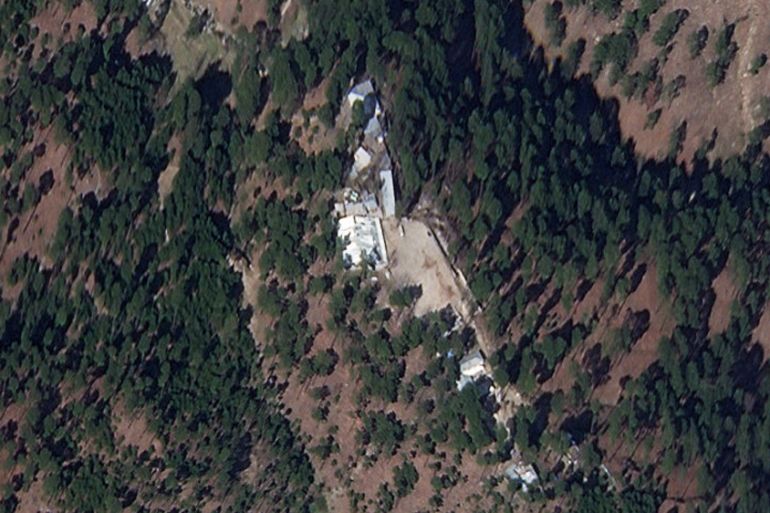Images show madrasa buildings standing after Indian attack claim
Satellite imagery shows at least six Jaish-e-Muhammad structures still standing on March 4 – six days after air raids.

Satellite images show a religious school run by Jaish-e-Muhammad (JeM) in northeastern Pakistan still appears to be standing days after India claimed warplanes destroyed it and killed a large number of fighters.
The images produced by Planet Labs Inc, a San Francisco-based private satellite operator, show at least six buildings on the school’s site on March 4 – six days after the air raids. Until now, no high-resolution satellite images were publicly available.
Keep reading
list of 4 itemsRussia-Ukraine war: List of key events, day 811
A UN resolution on the Srebrenica genocide ignites old tensions
US promises Ukraine military aid to make ‘real difference’ on the way
The images are virtually unchanged from an April 2018 satellite photo of the facility. There are no discernible holes in the roofs of buildings, no signs of scorching, blown-out walls, displaced trees around the school or other signs of an aerial attack.
The images cast further doubt on statements made over the last eight days by the Indian government of Prime Minister Narendra Modi that the February 26 raids had hit all the intended targets at the school site in northern Pakistan’s Balakot region.
India’s foreign and defence ministries did not reply to questions about the satellite images emailed by Reuters news agency.
Missed target?
Jeffrey Lewis, director of the East Asia Nonproliferation Project at the Middlebury Institute of International Studies, confirmed the photographs showed the structures in question still standing.
|
|
“The high-resolution images don’t show any evidence of bomb damage,” he said.
Government sources said last week 12 Mirage 2000 jets carrying 1,000kg bombs carried out the attack.
Lewis and Dave Schmerler, a senior research associate at the James Martin Center for nonproliferation studies who also analyses satellite images, said weapons that large would have caused obvious damage to the structures visible in the picture.
“If the strike had been successful – given the information we have about what kind of munitions were used – I would expect to see signs that the buildings had been damaged,” said Lewis. “I just don’t see that here.”
Pakistan has disputed India’s account, saying the operation was a failure that saw Indian jets, under pressure from Pakistani planes, drop their bombs on a largely empty hillside.
“There has been no damage to any infrastructure or human life as a result of Indian incursion,” Major-General Asif Ghafoor said. “This has been vindicated by both domestic and international media after visiting the site.”
Political fire
India must hold a general election by May and pollsters say Modi and his Hindu nationalist party stand to benefit from his aggressive response to a suicide bomb attack that killed 40 Indian paramilitary police in the disputed Kashmir region on February 14.
|
|
Indian officials said hundreds of “terrorists” were killed in the air raids.
But the Indian government has failed to produce evidence that the camp was destroyed and fighters killed. That prompted some opposition politicians to push for more details.
Modi has accused the opposition Congress party and other opponents of helping India’s enemies by demanding evidence of the attacks.
After the Indian air force incursion, a dogfight resulted in the capture of a downed Indian pilot, who was released on March 1 as part of a “peace gesture” by Pakistan.